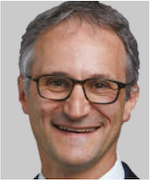Article
Lack of word “complete” in operative report results in payment denial
Author(s):
"There are a number of physicians who would not feel comfortable using the word 'complete' unless they were confident that all prostate tissue had been removed," write Jonathan Rubenstein, MD, and Mark Painter.
Jonathan Rubenstein, MD

Our hospital has been denied CPT code 52601 because the operative report does not mention the word complete. Although the operative note described the procedure in detail and the pathology report showed benign prostatic hyperplasia (BPH) tissue, why do we need to state the word complete? What does it mean in the CPT description?
CPT 52601’s description reads: “Transurethral electrosurgical resection of prostate, including control of postoperative bleeding, complete [vasectomy, meatotomy, cystourethroscopy, urethral calibration and/or dilation, and internal urethrotomy are included]).” It is interesting that the coder would deny billing CPT 52601 without the word complete in the operative description, because we can all agree that surgeons
Mark Painter

do the best and what is most medically appropriate for their patients and want the best outcomes. When billing a TURP, it is in the best judgment of the physician to remove the tissue needed to maximize patient outcomes, and the completeness of a TURP would be described within the body of the operative note rather than in the description. It is possible that the coder means well but may not fully understand the procedure being performed or may possibly be misinterpreting the word complete within the descriptor of this code. When reading the CPT code description, the word complete is followed immediately without further punctuation to list other services (vasectomy, meatotomy, cystourethroscopy, urethral calibration and/or dilation, and internal urethrotomy).
TURP has been a gold standard for treatment of BPH for many years. In reading many of the associated operative notes for this procedure, we have rarely seen the word complete used in the description of the service, the summary of findings, or in the body of the operative note. Instead, the operative note describes the process of resecting prostate tissue until the patient has a clear and open channel in the urethra. This usually involves a thorough resection of prostatic tissue throughout the prostate capsule. Most patients undergoing TURP will have residual prostate, a situation that has been accommodated by CPT with code 52630 (transurethral resection; residual or regrowth of obstructive prostate tissue including control of postoperative bleeding, complete [vasectomy, meatotomy, cystourethroscopy, urethral calibration and/or dilation, and internal urethrotomy are included]), which also contains the word complete. There are a number of physicians who would not feel comfortable using the word complete unless they were confident that all prostate tissue had been removed.
With both codes, the parenthetical note included immediately following the word complete is better applied to the fact that the TURP includes complete care related to the TURP including vasectomy, meatotomy, cystourethroscopy, urethral calibration and/or dilation, and internal urethrotomy, which should not be separately reported if performed. (Performance of any or all of these additional services is not required for reporting of the code.)
We should acknowledge that a physician may perform less than a typical TURP for some patients, resecting only a small portion of the prostate, which could be reported by appending modifier –52 to the 52601. We recommend having a discussion with the hospital coder and explaining this nuance, and feel free to show them this article.
Rubenstein is compliance officer and medical director of coding and reimbursement, United Urology Group and Chesapeake Urology, Towson, Maryland. Painter is CEO of PRS Urology SC in Denver, Colorado.
Send coding and reimbursement questions to Rubenstein and Painter c/o Urology Times®, at urology_times@mmhgroup.com.
Questions of general interest will be chosen for publication. The information in this column is designed to be authoritative, and every effort has been made to ensure its accuracy at the time it was written. However, readers are encouraged to check with their individual carrier or private payers for updates and to confirm that this information conforms to their specific rules.
Newsletter
Stay current with the latest urology news and practice-changing insights — sign up now for the essential updates every urologist needs.

















